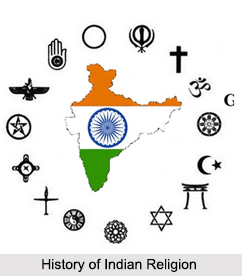Indian religions
 Faith in India is characterized by a variety of spiritual beliefs as well as practices. The Indian subcontinent is the birth place of 4 of the world's significant religions: particularly Hinduism, Buddhism, Jainism, and also Sikhism. Religious variety as well as religious tolerance are established by the law; the Constitution of India defines liberty of faith an essential right and also holds India to be a secular state.
Faith in India is characterized by a variety of spiritual beliefs as well as practices. The Indian subcontinent is the birth place of 4 of the world's significant religions: particularly Hinduism, Buddhism, Jainism, and also Sikhism. Religious variety as well as religious tolerance are established by the law; the Constitution of India defines liberty of faith an essential right and also holds India to be a secular state.
According to the 2011 demographics, 79.8% of the population of India techniques Hinduism, 14.2% complies with Islam, 2.3% abides by Christianity, 1.7% complies with Sikhism, 0.7% follows Buddhism, as well as 0.4% complies with Jainism. Zoroastrianism, Yungdrung Bon, the Baháʼí Faith, Sanamahism, and Judaism likewise have a background in India, and each has at least a number of thousand followers in India.
India has given refuge to followers of persecuted faiths throughout its history. In the post-classical duration, sanctuary was provided to Hebrew Jews that left captivity in Babylonia, Aramaic Christians that fled the Islamic invasion of Syria in the 7th century, and also Persian Zoroastrians who got away persecution in Persia in the 9th century adhering to the Muslim occupation of Persia, consequently, India has the largest population of people adhering to Zoroastrianism (i.e. Parsis or Iranis) worldwide. In the 20th to 21st centuries, haven was given to Russian, Persian and also Afghan Jews, Christians, Jains, Sikhs, Hindus, as well as Ahmadiyyas that took off persecution in Pakistan. When the Dalai Lama fled Tibet as well as took refuge in India after it was invaded by China, lots of Tibetans followed his example as well as proceed to look for haven in India.
Today, India is house to around 94% of the worldwide population of Hindus. Most Hindu temples as well as holy places lie in India, as are the native homes of many Hindu saints. Prayagraj holds the world's biggest spiritual expedition, Prayag Kumbh Mela, where Hindus from across the globe collaborated to shower in the assemblage of three spiritual rivers of India: the Ganga, the Yamuna, and the Saraswati. The Indian diaspora in the West has popularized numerous aspects of Hindu philosophy such as yoga, reflection, Ayurvedic medication, prophecy, fate, as well as reincarnation. The impact of Indian faiths has actually been significant around the globe. Numerous Hindu-based organizations, such as the International Society for Krishna Consciousness, the Ramakrishna Mission, the Brahma Kumaris, the Ananda Marga, and others have actually spread Hindu spiritual ideas and also methods. The Indian subcontinent additionally consists of the biggest populace of Muslims in the globe, with concerning one-third of all Muslims being from South Asia. By 2050, the Muslim populace of India is projected to expand to 311 million as well as exceed Indonesia to come to be the world's largest Muslim populace, although India will certainly maintain a Hindu majority (about 77%). India is likewise the cradle of Ahmadiyya Islam. The shrines of a few of one of the most renowned saints of Sufism, like Moinuddin Chishti as well as Nizamuddin Auliya, are located in India, and also attract site visitors from throughout the globe. ![]() Faith in India is characterized by a variety of spiritual beliefs as well as practices. The Indian subcontinent is the birth place of 4 of the world's significant religions: particularly Hinduism, Buddhism, Jainism, and also Sikhism. Religious variety as well as religious tolerance are established by the law; the Constitution of India defines liberty of faith an essential right and also holds India to be a secular state.
Faith in India is characterized by a variety of spiritual beliefs as well as practices. The Indian subcontinent is the birth place of 4 of the world's significant religions: particularly Hinduism, Buddhism, Jainism, and also Sikhism. Religious variety as well as religious tolerance are established by the law; the Constitution of India defines liberty of faith an essential right and also holds India to be a secular state.